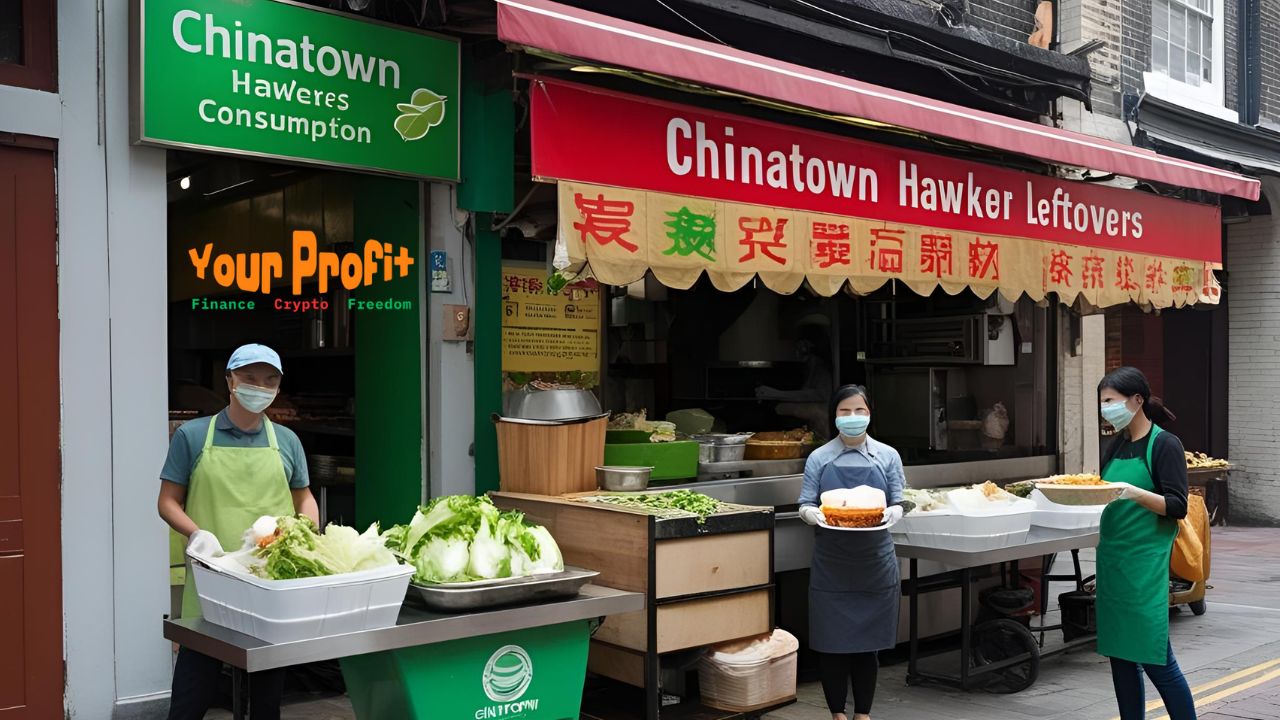Chinatown Hawker Leftovers Consumption – 7 Bold Innovations for a Greener Food Future
Stepping into Chinatown is like entering a sensory playground. The sizzling sounds, aromatic spices, and the sight of steaming plates make this hub a cornerstone of Singapore’s vibrant street food scene. Among the buzz, a quieter conversation is taking root—what happens to all the food that isn’t eaten?
Hawker centres, especially in bustling areas like Chinatown, churn out hundreds of meals daily. But behind the scenes lies a growing concern: Chinatown Hawker Leftovers Consumption. Could this issue hold the key to the future of food sustainability?
Understanding Food Waste in Urban Spaces
Food waste is not just about unfinished meals—it’s about wasted resources. From the farm to the fork, every step consumes water, fuel, and human effort. Globally, nearly 1.3 billion tons of food are wasted annually. In Singapore, the numbers are equally alarming, with over 800,000 tonnes of food wasted in 2023 alone.
Urban centres like Chinatown are hotspots due to high turnover and demand unpredictability.
The Scope of Leftovers in Chinatown Hawker Stalls
Hawker stalls prepare food in bulk, and often, what isn’t sold by day’s end goes uneaten. Here’s what typically contributes to leftover food:
-
Rice and noodles made in large quantities
-
Cooked meats not kept beyond safe consumption hours
-
Vegetables and perishables that lose freshness quickly
Though some stalls are trying new methods to reduce waste, the scope remains substantial.
What Happens to the Leftovers?
Food that isn’t sold generally follows three routes:
-
Donation – A few hawkers collaborate with food rescue groups.
-
Disposal – Unfortunately, most surplus ends up in the bin.
-
Reuse – Rare but growing practice of repurposing food into next-day specials.
Challenges include food safety laws, lack of cold storage, and customer skepticism.
The Environmental Impact of Food Waste
Wasting food has a huge carbon cost. When leftovers are tossed, they decompose in landfills and release methane—a greenhouse gas more potent than CO₂. In tightly packed cities like Singapore, food waste also takes up limited landfill space, pushing the country closer to its 2035 Semakau Landfill exhaustion date.
Innovative Uses of Hawker Leftovers
Thankfully, not all is wasted. Innovative practices are emerging:
-
Composting bins at select hawker centres turn scraps into garden fertilizer.
-
Tech platforms like OLIO or Treatsure connect diners with surplus food.
-
Creative chefs craft day-after dishes using ingredients that would otherwise be thrown.
These examples show how Chinatown Hawker Leftovers Consumption can shift from problem to opportunity.
Social Perception of Consuming Hawker Leftovers
Culturally, some view eating leftovers as “unsafe” or “cheap.” But that’s changing.
-
Health regulations ensure only safe food is reused.
-
Sustainability campaigns encourage waste-conscious dining.
-
Ethical dining trends are shifting consumer behavior toward acceptance.
Changing perceptions could help scale leftover consumption safely and ethically.
Government Policies and Regulations
Singapore has taken proactive steps to tackle food waste at multiple levels, including hawker centres like those in Chinatown. The National Environment Agency (NEA) has introduced several key policies:
-
Mandatory Food Waste Reporting for large food establishments
-
Grants for food waste reduction equipment like digesters or cold storage
-
Educational programs to help food vendors understand safety and sustainability standards
These regulations not only encourage responsible disposal but also support innovation among small food businesses.
Stories of Change: Hawkers Who Innovate
There are inspiring examples of hawkers leading the charge toward zero waste:
Case Study: A Zero-Waste Stall
One well-known vegetarian stall in Chinatown uses compost bins, portion control, and a pay-it-forward model where uneaten meals are passed to the needy. They’ve reduced food waste by over 60% in the last year.
Tech-Driven Initiatives
Some hawkers use smart sensors to monitor freshness and track best-sellers, allowing better forecasting and prep management. By knowing exactly how much to prepare, they drastically minimize leftovers.
Community Engagement and Volunteer Efforts
Community-led movements play a huge role in changing the landscape:
-
Youth groups partner with hawker centres to run food rescue programs.
-
NGOs like Food Rescue Sengkang help distribute unsold meals to low-income families.
-
University students host workshops teaching hawkers sustainable practices.
These efforts showcase the potential of grassroots action in supporting Chinatown Hawker Leftovers Consumption responsibly.
What the Future Holds for Chinatown Leftover Consumption
Imagine a future where hawker leftovers aren’t seen as waste, but resources.
Circular Economy in Food
By reintroducing leftovers into the supply chain—whether as compost, animal feed, or discounted meals—Chinatown can become a model for a circular food economy.
Leading Asia in Food Sustainability
With its efficient governance and tech-savvy population, Singapore is well-positioned to lead Asia in sustainable food practices. Chinatown could become a beacon of innovation, blending tradition with modern green values.
Challenges Ahead in Scaling Solutions
Despite positive momentum, hurdles remain:
-
Lack of refrigeration and storage makes long-term planning difficult.
-
Old-school mindset among some vendors resists change.
-
Customer demand for ‘fresh only’ meals discourages reusing leftovers.
Overcoming these requires both infrastructure investment and community education.
Role of Education and Awareness
Behavioral change starts with knowledge. Here’s what’s working:
-
School campaigns teach kids to value food and reduce waste at home.
-
Posters and signs in hawker centres inform customers about sustainable practices.
-
Documentaries and social media content spark dialogue around food waste and consumption culture.
How Tourists and Locals Can Help
Both locals and visitors have a role to play:
-
Smart ordering habits: Order only what you can finish.
-
Support stalls that openly declare zero-waste or leftover-friendly policies.
-
Download food-saving apps like Treatsure to buy discounted, surplus meals.
Every small action adds up to a greener dining experience in Chinatown.
A Greener Plate for the Next Generation
Chinatown Hawker Leftovers Consumption isn’t just about food—it’s about mindset, sustainability, and shared responsibility. With innovation, education, and community support, Singapore can transform its hawker culture into a zero-waste model for the world.
By making smart choices and supporting sustainable hawkers, we can preserve both the planet and the heritage of places like Chinatown. Because the future of food doesn’t just depend on what we eat—but on what we don’t waste.
Frequently Asked Questions (FAQs)
1. Is it legal to distribute hawker leftovers in Singapore?
No, unless the food meets NEA’s hygiene and food safety standards. However, cooked food is often hard to redistribute without proper cold chain logistics.
2. Are there any apps that help track surplus hawker food?
Yes. Apps like Treatsure and OLIO partner with food businesses to offer surplus meals to consumers at lower prices.
3. How can I help reduce food waste when eating at hawker centres?
Order mindfully, avoid overbuying, and bring your own container for leftovers. Supporting hawkers with sustainability policies is also impactful.
4. Are any hawkers in Chinatown already practicing zero-waste?
Yes, a few stalls implement portion control, composting, and meal donation systems. Some are even publicly recognized for their efforts.
5. What happens if food isn’t eaten in time?
Typically, it’s thrown away due to food safety concerns. This is why real-time redistribution systems are being developed.
6. Does eating hawker leftovers pose a health risk?
Not if handled correctly. Food should be stored properly, consumed within a safe timeframe, and reheated to the right temperature.







